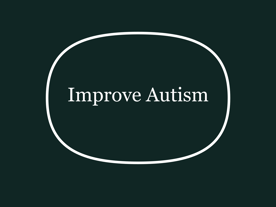Ketogenic diet versus gluten free casein free diet in autistic children: a case-control study
Authors:
El-Rashidy, O., El-Baz, F., El-Gendy, Y., Khalaf, R., Reda, D. and Saad, K
This study compared a type of ketogenic diet called the modified Atkins diet comparing it to a gluten-free casein free diet to reduce autism symptoms.
Improvements were seen after six months.
Summary of study
Diets That Helped: Both the modified Atkins diet (MAD) and the gluten-free casein-free (GFCF) diet effectively reduced autism symptoms in children with ASD, while the control group's balanced diet did not.
Extent of Improvement:
MAD: 18.95% (CARS), 21.52% (ATEC).
GFCF: 11.47% (CARS), 18.49% (ATEC).
Time Frame: Improvements were observed after 6 months of dietary intervention.
These findings suggest that both diets are viable options for improving autism symptoms in children aged 3-8 years, with no significant difference in overall effectiveness between them. The study recommends these diets but calls for larger-scale research to confirm the results.
Which Diets Helped with Autism Symptoms?
Both the modified Atkins diet (MAD) and the gluten-free casein-free (GFCF) diet led to significant improvements in autism symptoms, as evidenced by reductions in CARS and ATEC scores. The control group, which followed a balanced diet, showed no significant improvements, indicating that the specific dietary interventions were responsible for the observed benefits.
Modified Atkins Diet (MAD): This is a less restrictive version of the classic ketogenic diet, with approximately 60% calories from fat, 30% from protein, and 10% from carbohydrates. It significantly improved autism symptoms in the 10 children who completed the study (5 dropped out due to poor compliance).
Gluten-Free Casein-Free (GFCF) Diet: This diet eliminates gluten (found in wheat, barley, rye) and casein (found in milk products). It significantly improved autism symptoms in all 15 children who completed the study, with no dropouts reported.
Control Group: This group received a balanced diet and showed no notable changes in autism symptoms, serving as a baseline for comparison.
How Much Did Each Diet Help?
The improvements were quantified by calculating the percentage decrease in CARS and ATEC scores after 6 months. Lower scores indicate reduced severity of autism symptoms.
Modified Atkins Diet (MAD):
CARS Scores: Decreased from 41.70 to 33.70, a reduction of 18.95%. This was statistically significant (p=0.0001).
ATEC Scores: Decreased from 58 to 44, a reduction of 21.52%. This was also statistically significant (p=0.003).
Specific Improvements: Notable enhancements were observed in speech (23.43% decrease), sociability (17.96% decrease), and cognitive awareness (28.09% decrease), with a smaller, non-significant improvement in behavior (7.24% decrease).
Gluten-Free Casein-Free (GFCF) Diet:
CARS Scores: Decreased from 39.17 to 34.27, a reduction of 11.47%. This was statistically significant (p=0.001).
ATEC Scores: Decreased from 64.13 to 42.13, a reduction of 18.49%. This was highly significant (p=0.0001).
Specific Improvements: Significant enhancements were seen in speech (20.99% decrease) and behavior (22.26% decrease), with smaller, non-significant improvements in sociability (0.46% decrease) and cognitive awareness (10.87% decrease).
Control Group:
CARS Scores: Changed from 38.73 to 38.93, a negligible increase of 0.70% (not significant).
ATEC Scores: Changed from 62.82 to 61.60, a negligible decrease of 0.74% (not significant).
When comparing the two diets directly, there was no statistically significant difference in the mean improvements between the MAD and GFCF groups (p-values: 0.06 for CARS, 0.596 for ATEC), suggesting they were similarly effective overall. However, MAD showed a slightly greater improvement in CARS scores and cognitive awareness, while GFCF showed a slightly better improvement in ATEC scores and behavior.
How Long Did It Take for the Diets to Help?
The study assessed the children at two points: before starting the diets and after 6 months of adherence. The significant improvements in CARS and ATEC scores were observed at the 6-month mark. The article does not provide interim assessments or specify when improvements were first noticed, so it can only be concluded that the benefits were evident after 6 months of following the respective diets.
MAD Group: Assessments showed significant symptom reduction after 6 months, despite 5 dropouts due to compliance challenges.
GFCF Group: All 15 participants completed the study, with significant improvements also observed after 6 months.
Control Group: No significant changes were noted after 6 months.
https://pubmed.ncbi.nlm.nih.gov/28808808/
doi: 10.1007/s11011-017-0088-z


